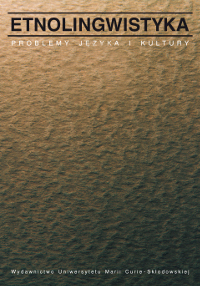Магическая музыка сутартинес как символ гармонии и порядка
SUTARTINES- MAGICAL MUSIC AS A SYMBOL OF HARMONY AND ORDER
Author(s): Daiva Račiūnaitė-VyčinienėSubject(s): Anthropology, Language and Literature Studies
Published by: Wydawnictwo Naukowe Uniwersytetu Marii Curie-Sklodowskiej
Keywords: Lithuanian songs called sutartines; ritual music; symbolism; the cosmic world order; the repetition of formulae; timelessness; the lado chant
Summary/Abstract: A claim is made that polyphonic Lithuanian songs called sutartines are examples of archaic ritual music in which the sounds and movements of the performers are symbolic in nature and reflect the world’s harmony and cosmic order. The magical function of the music is based on the structure of the melody and text, as well as on the way in which a particular piece is performed. An important element of the magic of sutartines is the very timbre of the performer’s voice, emphasizing vowels and creating the ‘gaggling’ or ‘cackling’ effect. The timbre is a ‘sound mask’ put on with the intention of preforming a song. The music of sutartines flows in an endless symbolic circle. It lacks signals of the beginning, culmination and end. Rhythmic repetitions of formuli create a pulsating effect, thanks to which the performers and the listeners can be emmersed in hypnotic timelessness, as it is done in Tantric mantras. The choruses of Lithuanian sutartines resemble Hindu mantras also due to various plays on sounds, e.g. modifications of one word, such as laduto — ladoto — lodata, etc. The characteristic chant lado — also present in Slavonic ritual songs — accompanied by clapping, probably had a deeper mythological sense, similarly to certain apostrophes to deities in sacral texts of Old-Hindu Rig-Veda.Singing sutartines can be likened to weaving with the use of verbal-musical formuli and appropriate movements, which is why a special notation for recording the singing has been introduced, based on little squares on graph paper, rather than on notes and the staff. Merging of voices and performing sutartines in a closed circle creates the effect of bell sounds, which enable one to experience harmony with the world. The term sutartines derives from the Lithuanian verb sutarti ‘be in harmony, tally’.
Journal: Etnolingwistyka. Problemy Języka I Kultury
- Issue Year: 13/2001
- Issue No: 13
- Page Range: 179-196
- Page Count: 18
- Language: Russian

